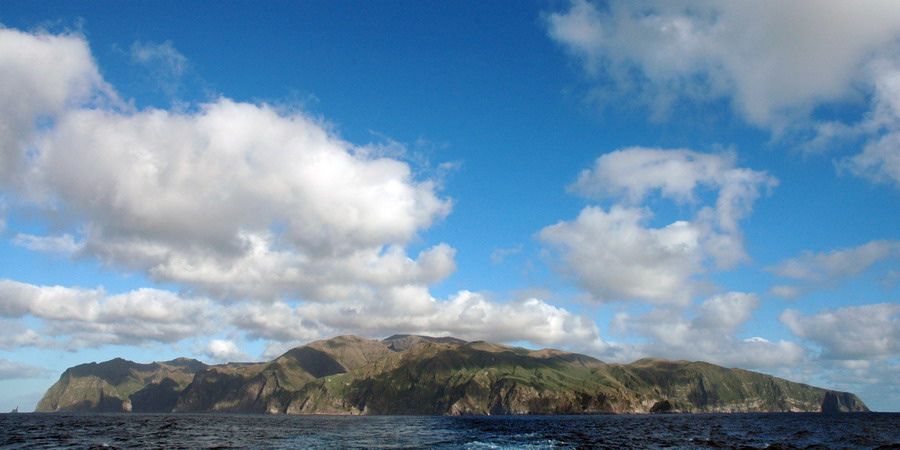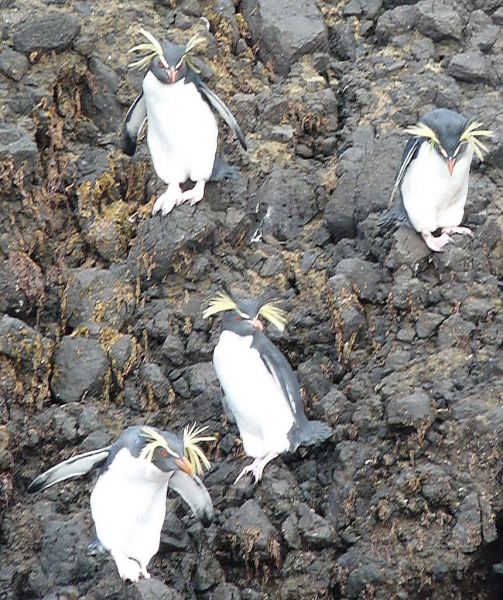David, ZS1BCE ex ZS8Z will be active from Gough Island (IOTA AF-030) as ZD9A.
He will be active on HF Bands.
QSL via ZS1LS.
David replacing Pierre, ZS1HF ZD9M as the islands Radio Technician.

A Look at Gough Island
Located in the South Atlantic Ocean is the Island of Gough. The island is a part of the Saint Helena, and except for a weather station (which has been there since 1956 and manned by six people,) it is uninhabited by humans. It is believed that the island was discovered in 1505 by a Portuguese fleet that had been sailing from Tagus, although its exact history is technically unknown. The island was then named after Goncalo Alvarez who was the ship’s captain. The name kept this title for over 200 years. In March, 1732, Charles Gough rediscovered the island. Charles Gough made the rediscovery of the island as he served as captain of the Richmond, a ship that was on voyage from England to China. The two men who discovered the island had different nautical land points for it, but it was discovered many years later that, despite the position differences, the island was, in fact, the same island. It is a mystery why Gough Island was the final name given to the island after three centuries of being named after Goncalo Alvarez on maps.
The Position of Gough Island & the Weather Station
Gough Island is about 8.1 miles in length, and 4.1 miles wide. The island is in the shape of a rectangle. Edinburgh Peak is the highest point on the island, but there are several other peaks there as well.
The weather station is a part of the South Africa Weather Service. The situation of Gough Island makes it possible to detect cold fronts, since they usually come in from the southwest. The weather team has six to seven people, including a radio technician, a meteorologist, a diesel mechanic, a medic and biologist. Each team of weather professionals stay on the island for a duration of about 13 months. After this just over one year period of time has passed, a new weather team makes their arrival and go through the same process as the first weather team. There are also scientist and researchers who visit the island on a regular basis, learning and discovering more about the island during their journeys. Their stay typically last only a few months in duration.
Gough Island sits about 2950 foot above sea level. The island is a Tristan da Cunha dependent island. Together with Inaccessible Islands, Gough Islands serves as a protected wildlife reserve. The UNESCO designed both islands as World heritage sites. One of the things that stands out about the island is that the ecosystems is nearly untouched. Seabirds thrive on the land, and it is one of the best resting places for the mammal. House mice can be found on Gough Island, as well as fur seals. Along with a high population of seabirds, Gough Islands is also home to 12 different plant species.

Mice on Gough Island
Most people do not think much about house mice. After all, they are small and tiny, and do not cause a lot of harm, especially on an island where there is very little human contact. But the mice on Gough Island are three to four times the size of the typical house mouse and they make their meals out of bird chicks. The problem with that is that the bird chicks have not faced any predators before and lack the skills to defend themselves against these mice. The mice put a threat on a very rare species of animal living on the island. There is little way to fight the mice that live there, with the exception of poison dropped from an airplane. The mice were believed to have made their way on the island in the 19th century from a boat.
The nearest habituated land is 1,700 miles away- Cape Town, and the island Is2,000 miles away from South America. The nearest island to Gough is far away as well, sitting some 220 miles away. It is the isolation of the island that has kept it so well preserved and uninhabited. On the island are several satellite islands including Tristiana Rock, Cone Island, Church Rock, The Admirals, and Southwest Island.

Volcanic Island
Gough Island, as a volcanic island, has had a number of volcanos throughout its history. Those volcanic episodes have caused rock masses to form on the island. Since man began visiting the island, however, things have changed. It has been nearly 2,300 years since a volcanic left marks on the island. The volcanic eruptions have left many mounds in the land.
There is no manmade structures located on the island, expect for the weather station and the generators that power that station. Temperatures on the island remain rather consistent throughout the year. The average summer time temperature is 61 degrees, while winter temperatures aren’t too much lower, with an average daily high of about 57 degrees. The highest recorded temperature on Gough Island was 79.5 degrees. The lowest recorded temperature on the island was 27.1 degrees. Each year Gough Island receives around 120 mm of rain. The highest amount of precipitation occurs in the month of June when an average of 12.2 inches falls during the month.
Travel to Gough Island
As you might expect, travel to Gough Island is very sparse, and only those with a keen interest in the island make their way there. There is but one way to get to the island, and that is by a ship. There are no manmade structures on the island, so this also eliminates hotels, restaurants and other inhibitions from being there as well. Gough Island travels is not for everyone. Only those who want to learn the history, people that can adapt to living without some of the many luxuries the world has afforded them with technology, can stay any length of time on the island. And getting there, well, that is another story all together. One thing is for sure: Gough Island is one of the most natural places on earth that is free from the destruction of mankind, and the greatest piece of land for our ecosystem to thrive.

